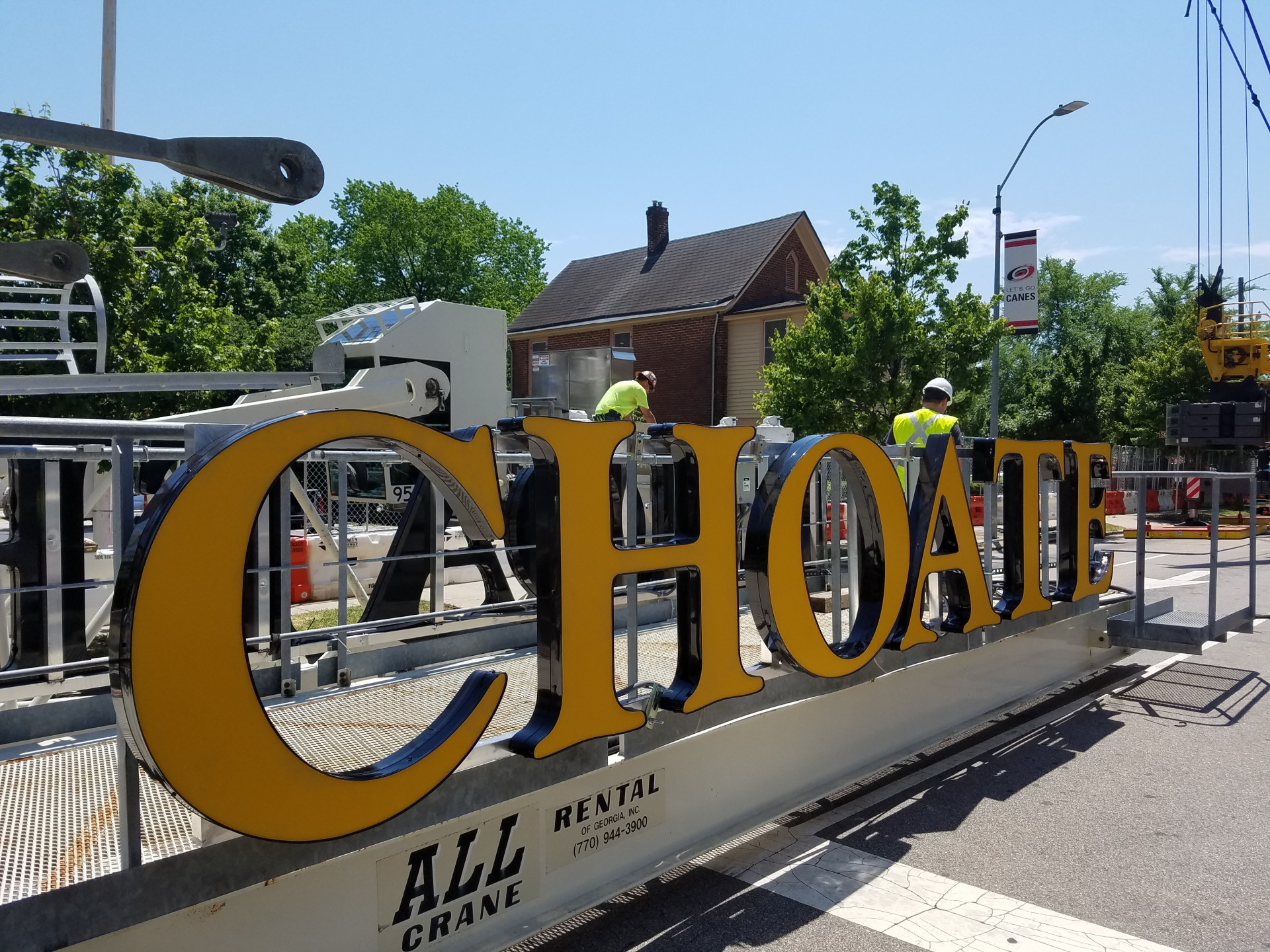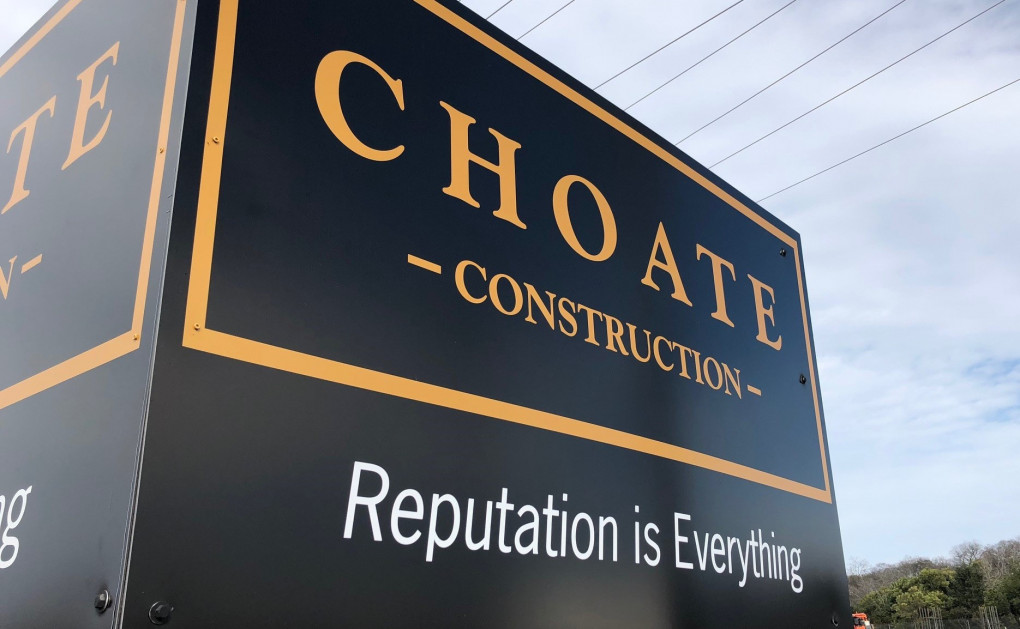Large, Regional General Contractor Looks to Bring Consistency & Efficiency to Their Signage
With any large, growing company, regardless of industry, sometimes growth and scale eventually invites a need for process improvement. In the case of one reputable, regional general construction company, the opportunity being addressed was bringing cohesiveness and efficiency to their signage process, which had multiple facets as the company grew over several decades.

As Choate Marketing Director Emily Bridges explains, by 2016, “Choate was growing out of this more siloed office-by-office autonomy. While we try to empower and ensure our offices can operate effectively in their respective market, the autonomy was beginning to impact our branding cohesiveness and consistency. We wanted to reunite on the marketing front: from a cohesiveness standpoint, consistency standpoint, pricing standpoint, and just overall efficiency. She went on, “(At the time) We had 5 offices and every project team was responsible for their own signage, so you had the wheel being reworked many, many times over.”
According to Bridges, it came down to 3 main factors in terms of choosing the signage partner that was right for Choate Construction:
- Cost – They had to show the local offices that while they would no longer be working with their local vendors, the cost would not be higher. Duncan-Parnell was able to get competitive on price.
- The online portal - The Choate team envisioned and helped structure a way that Duncan-Parnell could automatically receive orders from our online store and process them quickly and efficiently.
- Turnaround time – The third factor was working with Yaw on having the art ready to go, including reducing turnaround time and negotiated shipping time. That touch base step is key today, and now much more efficient.
Upon rolling out the new process with the now, company-wide vendor, according to Bridges, things went pretty smoothly. “We had very few instances where anything went wrong; it really worked well and pretty much right off the bat. That is a testament to the planning and working through what the process would look like between us and Duncan-Parnell early before we told our teams ready, set, go.“
Since 2016 when the new, more unified process and vendor were established, Choate has grown their portfolio from just shy of 50 signage elements to in 2020, 150 signage elements. There have been new, more progressive signage asks, such as LED crane signage, as well as unexpected, quick-turn needs, such as COVID-19 signage for all of their jobsites during the pandemic in 2020.
Mrs. Bridges focused on consistency and responsiveness as keys to the Choate and Duncan-Parnell partnership. “We know that when we reach out we’re going to get a timely response and we can trust (Duncan-Parnell) with the job. There has also been a level of consistency in the product and a willingness to be a real partner. Just a willingness to do whatever it takes and whatever is possible to feasibly get it done by the time we need it done.”
Like their commercial construction projects, Choate Construction takes their brand and the productivity of the team seriously. They know that while they’ll continue to grow and see new signage, they also value a strong partnership.
